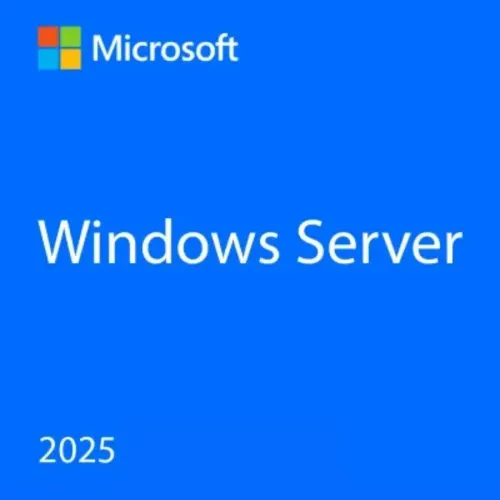Windows Server 2025: Known Issues, and Improvements

We are excited about the general availability of Windows Server 2025, the latest release from Microsoft. This new version brings a wealth of features and improvements aimed at enhancing security, performance, and hybrid cloud capabilities. Whether you’re running large-scale enterprise infrastructure or managing a small to medium-sized business, Windows Server 2025 offers significant advancements that can transform your IT environment.
Key Features and Improvements
1. Enhanced Security
Security continues to be a top priority for Microsoft, and Windows Server 2025 introduces a series of security enhancements to help protect your environment against evolving threats. One of the most notable improvements is the introduction of improved algorithms for Name/SID lookups and confidential attributes. These updates bolster the protection of sensitive information and improve how your system handles security-related tasks.
Additionally, LDAP encryption is now enabled by default, ensuring that communications between directory services and clients are securely encrypted out-of-the-box. Windows Server 2025 also includes updates to the Kerberos PKINIT protocol, enhancing cryptographic agility and allowing for stronger, more adaptable cryptographic techniques. These improvements provide an extra layer of defense against attacks, ensuring your organization remains protected in an increasingly hostile cybersecurity landscape.
2. Performance Boosts
Another standout feature of Windows Server 2025 is its significant performance improvements, particularly in I/O throughput. With workloads across industries becoming more data-intensive, the ability to handle high-volume data transfers efficiently is crucial. This new release offers substantial gains in this area, making it an excellent choice for organizations with demanding performance needs.
The I/O throughput improvements are especially beneficial for environments that require large-scale storage and data processing, such as those in data centers, virtualized environments, or industries relying on real-time analytics. These enhancements ensure faster, more efficient operations, allowing your organization to stay competitive and agile in today’s fast-paced digital world.
3. Hybrid Cloud Capabilities
The growing importance of hybrid cloud environments is reflected in Windows Server 2025’s new cloud integration capabilities. This version offers seamless integration with both on-premises and cloud-based resources, enabling organizations to leverage the best of both worlds. Whether you're looking to run critical applications locally while offloading less sensitive tasks to the cloud, or you need to integrate with Azure for enhanced disaster recovery, Windows Server 2025 has you covered.
This seamless hybrid cloud integration provides flexibility and ensures your infrastructure is optimized for scalability, enabling businesses to grow and adapt without compromising on performance or security.
4. GPU Virtualization
For organizations that rely on AI, machine learning, or other high-computational workloads, Windows Server 2025 brings Multi-Instance GPU (MIG) and GPU Partitioning features. These updates enable more efficient use of GPU resources, making it easier to deploy workloads that demand high levels of graphical or computational power.
Whether you're running AI models, conducting data simulations, or processing large datasets, these GPU virtualization improvements ensure your systems are equipped to handle the most demanding applications with ease.
5. Active Directory Enhancements
Windows Server 2025 also brings several key updates to Active Directory Domain Services (AD DS) and Active Directory Lightweight Domain Services (AD LDS). These updates improve domain management and increase the scalability and performance of Active Directory in large environments.
Notably, the introduction of a 32k database page size enhances the capacity for multi-valued attributes, enabling Active Directory to scale more effectively for larger organizations or those with complex directory structures. These updates streamline administration, improve performance, and make Active Directory more flexible and resilient in handling diverse workloads.
Upgrade Paths
One of the most exciting changes in Windows Server 2025 is its expanded upgrade path support. Organizations can now upgrade directly from any of the last four versions of Windows Server (n-4), making the transition to the latest release smoother and more efficient. This flexibility reduces the need for multiple sequential upgrades, saving both time and effort during the migration process.
Known Issues to Be Aware Of
As with any new release, there are a few known issues that users should be aware of. These issues, while not necessarily blocking, may impact certain environments:
Language Bug During Installation: Some users might experience an issue where installation text appears in English, regardless of the selected language. This bug can be addressed, but it’s important to be aware of it during installation.
High Core Count CPUs: Systems with more than 256 threads/logical processors may encounter issues during installation or operation. This limitation could impact high-end servers with extreme core counts.
iSCSI Environments: In certain configurations, users may encounter a “boot device inaccessible” error when using iSCSI storage. This issue affects boot-time operations and can be worked around, but it is something to consider for those using iSCSI in their infrastructure.
Microsoft has provided detailed workarounds for these issues, and we recommend reviewing the official documentation for solutions and mitigations. Despite these known issues, Windows Server 2025 remains a robust, reliable release for most use cases.
Support and Availability
Windows Server 2025 is a Long-Term Servicing Channel (LTSC) release, meaning it will receive mainstream support until October 9, 2029, and extended support until October 10, 2034. This long support lifecycle ensures that organizations can count on Windows Server 2025 for their long-term infrastructure needs without worrying about needing frequent upgrades or patches.
For those looking to evaluate Windows Server 2025 before upgrading, Microsoft offers a free 180-day trial through the Microsoft Evaluation Center. In addition, System Center 2025 is also available, providing management tools to complement the new server release.
Licensing Information
For those looking to deploy Windows Server 2025, there are several licensing options available:
These licensing options provide flexibility for businesses of all sizes, ensuring that you can choose the correct edition and license based on your infrastructure needs.
Final Thoughts
Windows Server 2025 represents a major leap forward in the evolution of server technology. With improvements in security, performance, and hybrid cloud integration, it offers an ideal solution for organizations looking to future-proof their infrastructure. While there are a few known issues to keep in mind, the overall benefits make Windows Server 2025 an exciting release.
Please feel free to ask any questions if you need more details or have specific concerns regarding your upgrade path or deployment. We're here to help!

